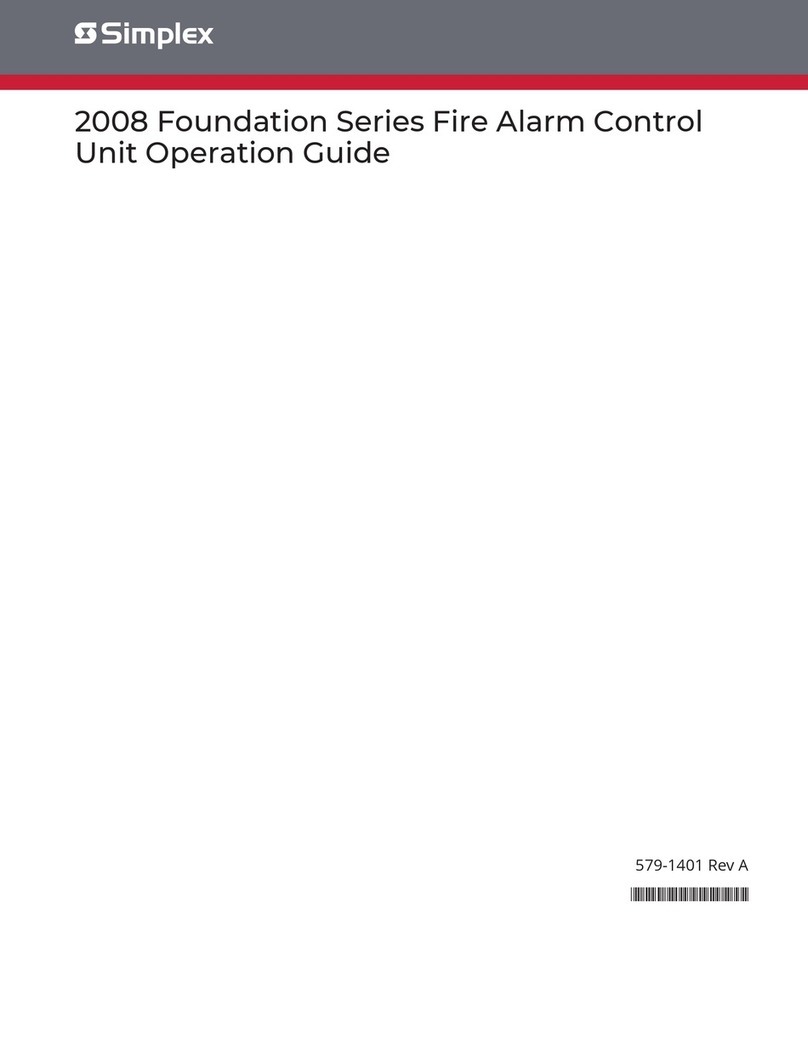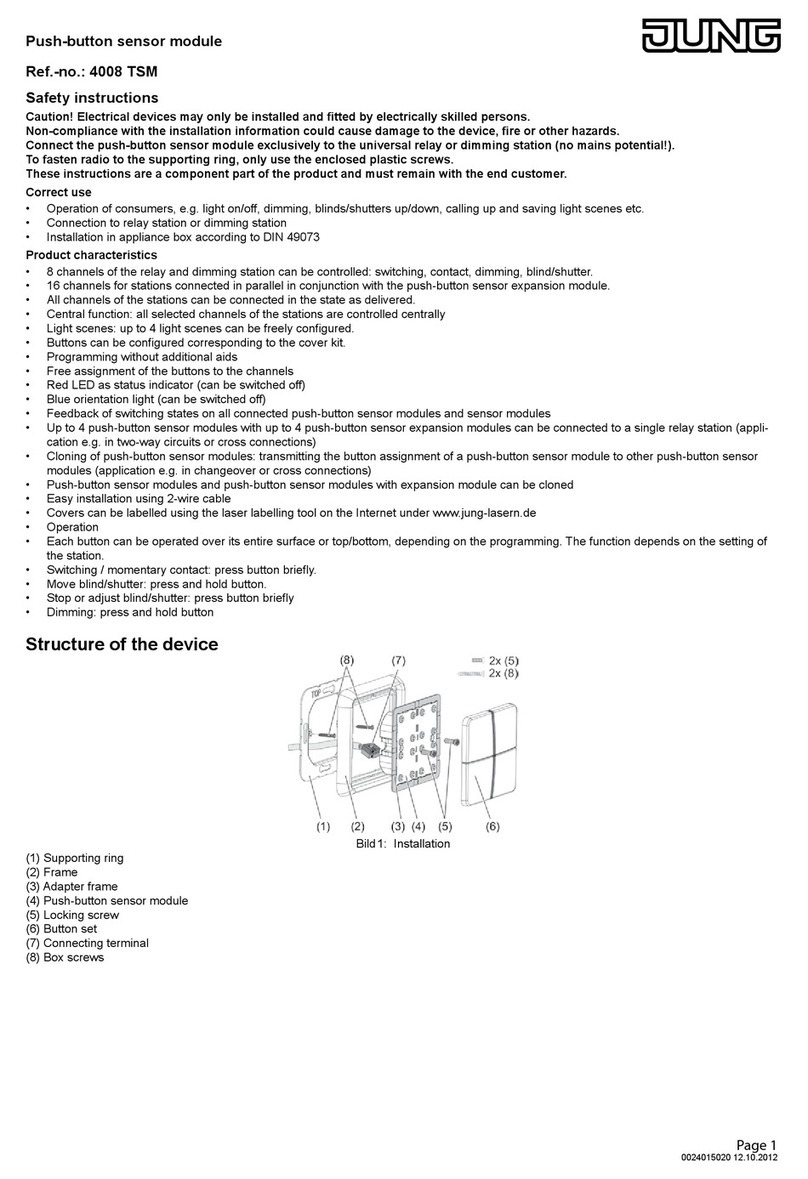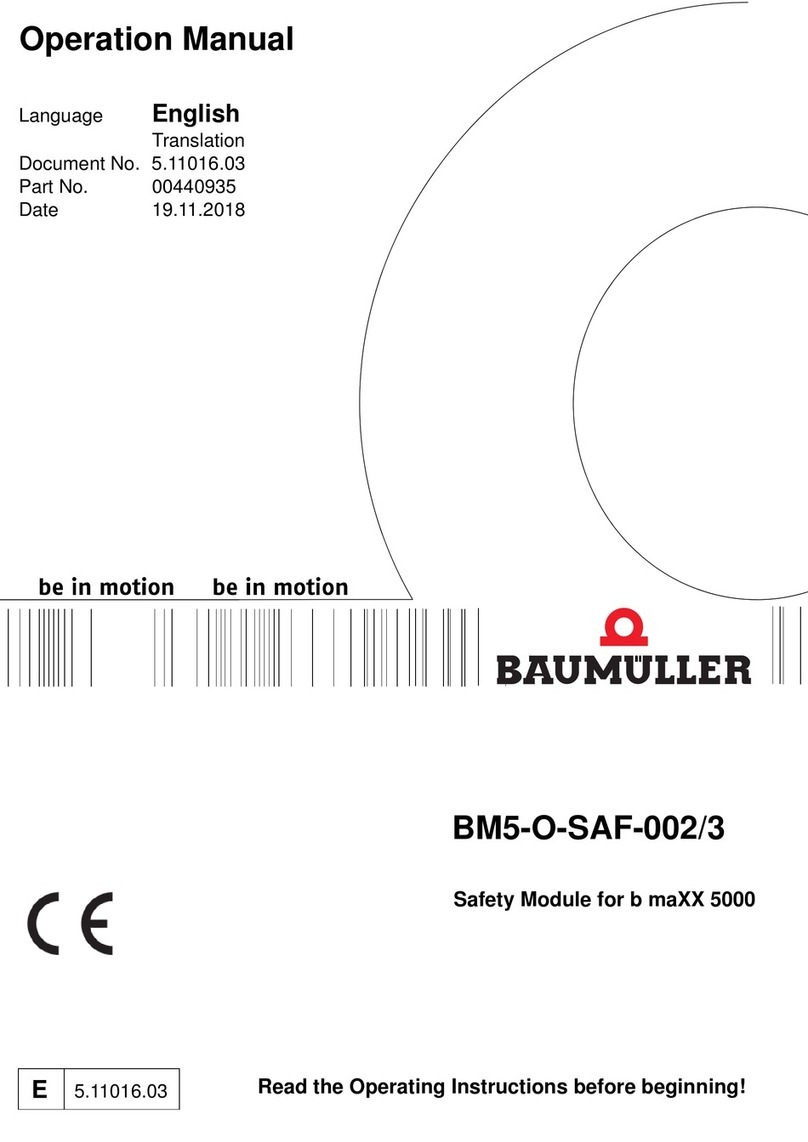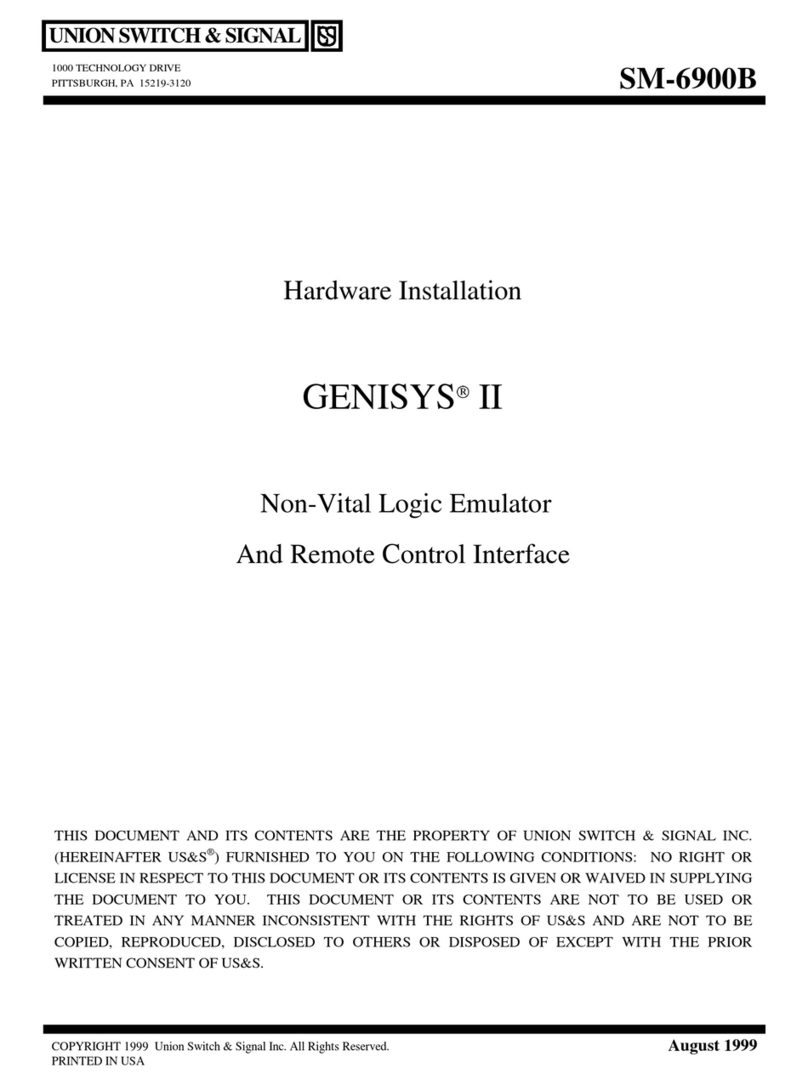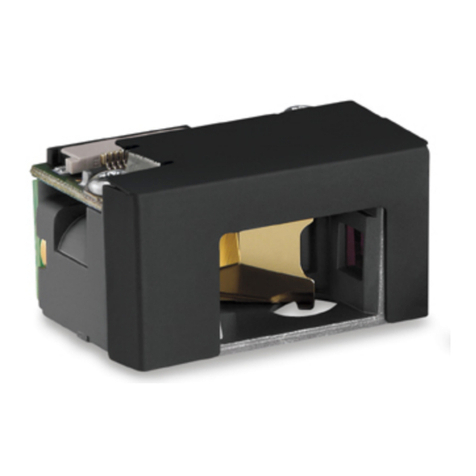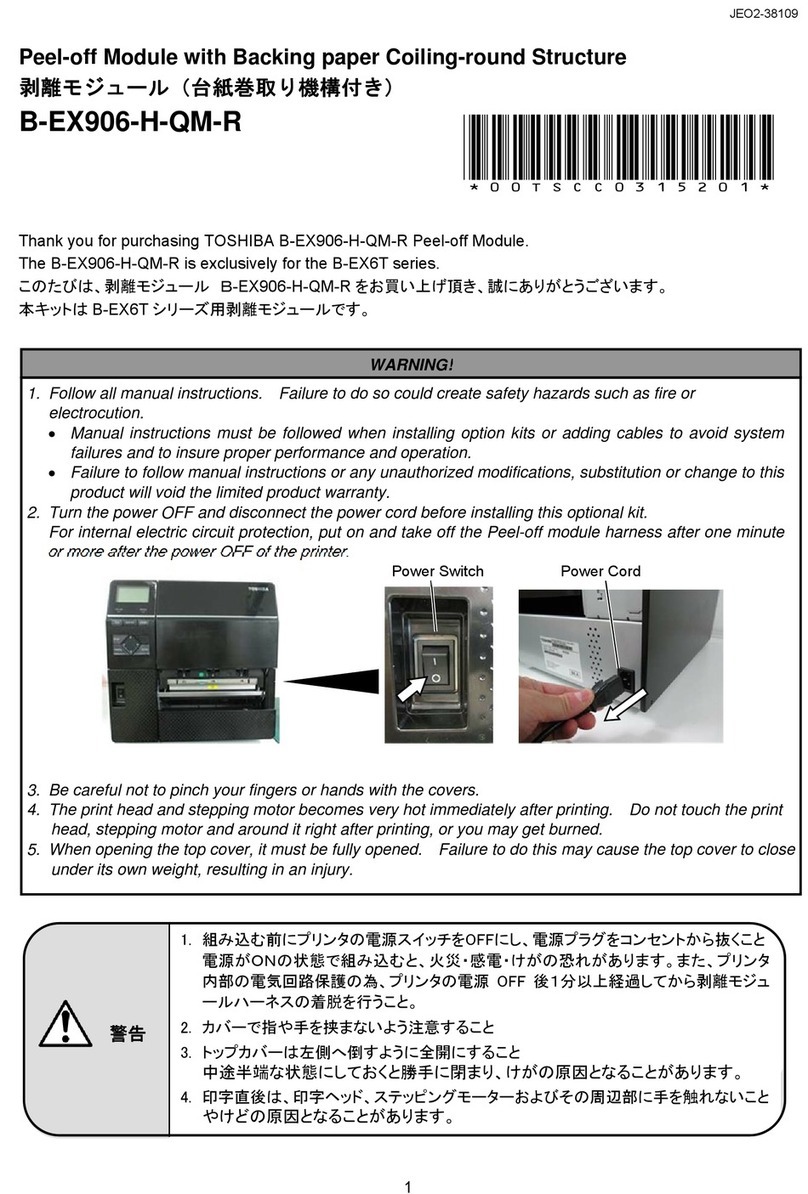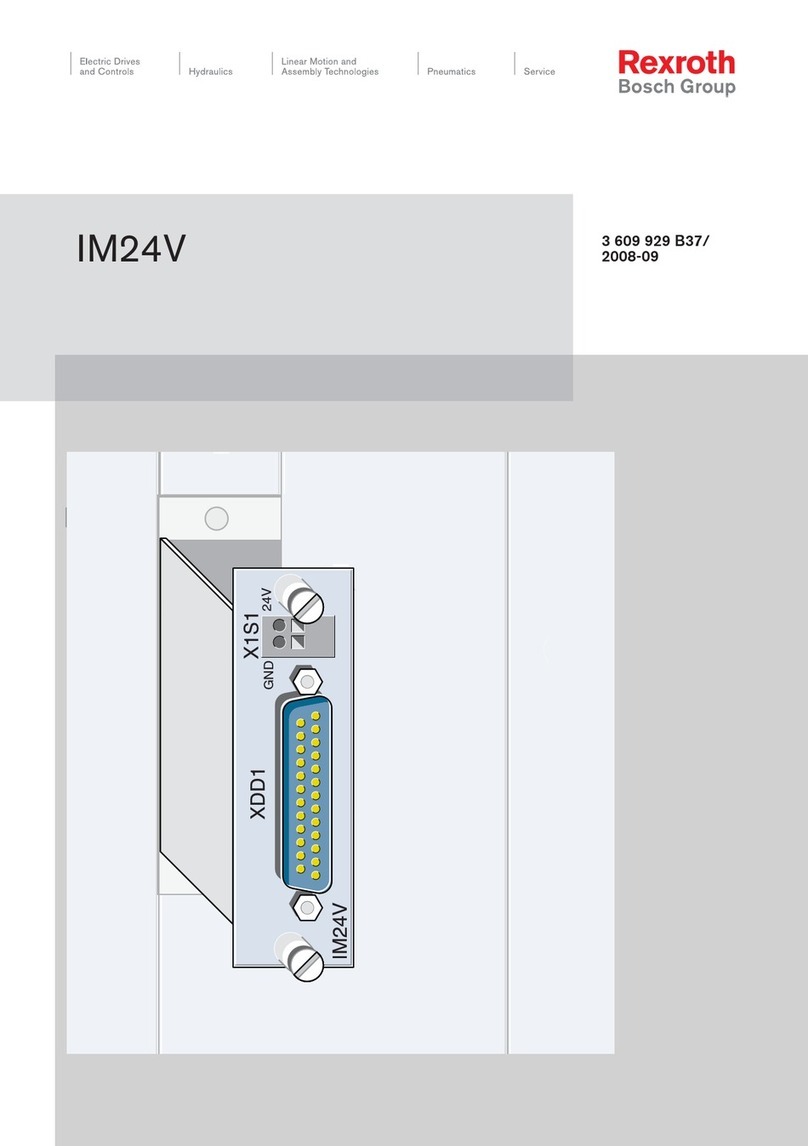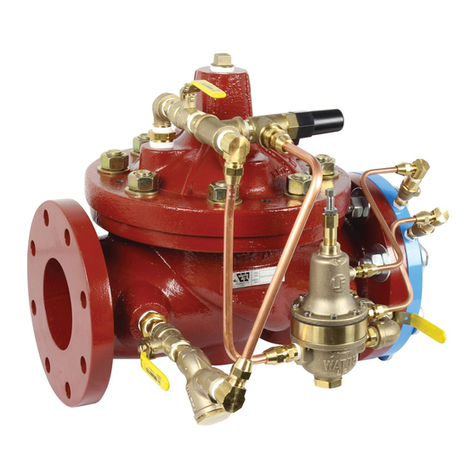BESA 130 Series User manual

Il presente manuale è disponibile, in versione stampabile, dal sito Besa.
Use and Maintenance Manual can be downloaded from Besa web site.
MANUALE DI USO E MANUTENZIONE
USE AND MAINTENANCE MANUAL
BESA S.p.A. Società che opera con Sistema Qualità in accordo alla norma UNI EN ISO 9001 certificato da ICIM.
Ita-inglese 05-2015 26-10-2015 8:54 Pagina 1

Ita-inglese 05-2015 26-10-2015 8:54 Pagina 2

INDICE GENERALE
USO DEL MANUALE 4
SIMBOLOGIA IMPIEGATA 4
LETTERA INFORMATIVA 5
GARANZIA 6
DIRETTIVA 94/9/CE (ATEX) 7
TRASPORTO E MOVIMENTAZIONE 8
DESCRIZIONE DELLA VALVOLA 9
2.1 • DATI DELLA VALVOLA 9
2.2 • CARATTERISTICHE GENERALI 11
INSTALLAZIONE 12
3.1 • VERIFICA DEL PRODOTTO ACQUISTATO 12
3.2 • CONDIZIONI PER L’ INSTALLAZIONE 13
3.3 • INSTALLAZIONE DELLA VALVOLA 14
3.4 • FORZE DI REAZIONE 15
3.5 • APPLICAZIONE COMBINATA VALVOLE
DI SICUREZZA/DISCHI DI ROTTURA 16
ESERCIZIO DELLA VALVOLA
DI SICUREZZA 17
4.1 • PRESSIONE DI ESERCIZIO 17
4.2 • TENUTA MORBIDA 17
4.3 • PERDITE DI CARICO 18
4.4 • SCARICO FLUIDI NOCIVI 18
4.5 • VALVOLE SICUREZZA CON SOFFIETTO 18
4.6 •VALVOLA CON CAMICIA RISCALDAMENTO 20
4.7 • VALVOLA CON ATTUATORE PNEUMATICO 20
4.8 • VALVOLA CON DISPOSITIVO DI
BLOCCAGGIO DELL’OTTURATORE 20
4.9 •VALVOLA CON SENSORE DI
SEGNALAZIONE DELL’APERTURA 21
4.10 •VALVOLA CON SISTEMA
DI SMORZAMENTO DELLE VIBRAZIONI 21
4.11 •ESERCIZIO DELLA MOLLA 22
4.12 • CRISTALLIZZAZIONE/POLIMERIZZAZIONE 22
4.13 •TRAFILAMENTO DI FLUIDO 22
4.14 • DRENAGGIO DELLA VALVOLA 22
MANUTENZIONE 23
5.1 • INFORMAZIONI GENERALI 24
5.2 •NORME DI SICUREZZA 24
5.3 • ABBIGLIAMENTO 24
5.4 •MANUTENZIONE ORDINARIA 24
5.5 •PULIZIA E LUBRIFICAZIONE 24
5.6 •REGOLAZIONE DELLA PRESSIONE 25
5.7 •SOSTITUZIONE DELLA MOLLA 33
5.8 • ESPLOSI 36
5.9 •ASSISTENZA TECNICA 44
5.10 •ELENCO PARTI DI RICAMBIO 44
IMMAGAZZINAMENTO 45
6.1 •MESSA FUORI SERVIZIO 45
ANALISI DEI RISCHI 46
TABELLE NOTE 50
REGISTRAZIONE MANUTENZIONE 50
®
Page 3/50
MANUALE USO E
MANUALE USO E
MANUTENZIONE
MANUTENZIONE
USE AND MAINTENANCE
USE AND MAINTENANCE
MANUAL
MANUAL
1
2
3
4
5
6
7
8
9
1
2
3
4
5
6
7
8
9
CONTENTS
HOW TO USE THIS MANUAL 4
SYMBOLS USED 4
NOTICE 5
WARRANTY 6
ATEX DIRECTIVE 94/9/EC 7
TRANSPORT AND HANDLING 8
DESCRIPTION OF THE VALVE 9
2.1 • VALVE IDENTIFICATION 9
2.2 • GENERAL CHARACTERISTICS 11
INSTALLATION 12
3.1 • CHECKING GOODS AS ORDERED 12
3.2 • INSTALLATION REQUIREMENTS 13
3.3 • INSTALLATION OF THE VALVE 14
3.4 • REACTION FORCE 15
3.5 • COMBINED APPLICATION OF
SAFETY VALVES/RUPTURE DISCS 16
SAFETY VALVE OPERATION 17
4.1 • OPERATING PRESSURE OF THE
PROTECTED EQUIPMENT 17
4.2 • “SOFT SEAL” SAFETY VALVES 17
4.3 • PRESSURE LOSSES 18
4.4 • DISCHARGE OF NOXIOUS OR
HAZARDOUS FLUIDS 18
4.5 •
SAFETY VALVE WITH BELLOW
18
4.6 •SAFETY VALVE WITH HEATING JACKET 20
4.7 •SAFETY VALVE WITH PNEUMATIC
ACTUATOR 20
4.8 •
SAFETY VALVE WITH DISC BLOCKING DEVICE
20
4.9 •SAFETY VALVE WITH LIFT INDICATOR 21
4.10 •
SAFETY VALVE WITH VIBRATIONS STABILIZER
21
4.11 •SPRING FUNCTION:
HIGH TEMPERATURE FLUID DISCHARGE 22
4.12 • FLUID CRYSTALLISATION/POLYMERISATION 22
4.13 •LEAKAGE OF FLUID 22
4.14 • DRAINING THE SAFETY VALVE 22
MAINTENANCE 23
5.1 •GENERAL INFORMATION 24
5.2 •SAFETY RULES 24
5.3 •CLOTHING 24
5.4 •ORDINARYMAINTENANCE 24
5.5 • CLEANING AND LUBRICATION 24
5.6 •PRESSURE ADJUSTMENT 25
5.7 • REPLACEMENT SPRING 33
5.8 •EXPLODED VIEW DRAWING 36
5.9 •TECHNICAL SUPPORT44
5.10 • SPARE PARTS LIST 44
STORAGE 45
6.1 •DECOMMISSIONING 45
ANALYSIS OF RISKS 46
NOTES TAB 50
MAINTENANCE REGISTRATION 50
Ita-inglese 05-2015 26-10-2015 8:54 Pagina 3

®
USO DEL MANUALE
Il manuale d’uso e manutenzione è il documento
che accompagna la valvola dal momento della sua
costruzione sino alla sua rottamazione. Risulta cioè
essere parte integrante di essa. E’ richiesta la lettu-
ra del manuale prima che venga intrapresa QUAL-
SIASI ATTIVITA' che coinvolga l’apparecchiatura
compresa la movimentazione e lo scarico della
stessa dal mezzo di trasporto.
Per una migliore consultazione il manuale di istru-
zioni è suddiviso nelle seguenti sezioni:
Sezione 1
Imballaggio, movimentazione e trasporto.
Sezione 2
Descrizione della valvola ed il relativo campo di
applicazione.Vengono inoltre indicate tutte le
caratteristiche tecniche della valvola.
Sezione 3
Verifica del prodotto acquistato e installazione della
valvola in opera.
Sezione 4
Funzionamento normale della valvola durante
l’esercizio all’interno dell’impianto
Sezione 5
Manutenzione ordinaria, straordinaria e descrizione
dei sistemi di protezione adottati al fine di garanti-
rel'incolumità delle persone che operano in prossi-
mità della valvola.
Sezione 6
Immagazzinamento
Allegati
SIMBOLOGIA IMPIEGATA
Le operazioni che, se non effettuate correttamente,
possono presentare rischi, sono indicate con il
simbolo:
HOW TO USE THIS MANUAL
This Use and Maintenance Manual is designed to
stay with the valve from when it is manufactured
until it is scrapped: it is an integral part of the unit.
Please read the manual before undertaking ANY
ACTIVITY involving the apparatus: this includes
handling and unloading it on delivery.
The Instruction Manual is divided into the following
sections for ease of consultation:
Section 1
Packaging, handling and transport.
Section 2
Description of the valve and its applications.
Includes the valve’s technical specification.
Section 3
Checking that the goods areas ordered; installing
the valve whereit is to function.
Section 4
Normal functioning of the valve in operation within
the plant
Section 5
Ordinary and extraordinary maintenance; descrip-
tion of protection arrangements to ensurethe safe-
ty of people working near the valve.
Section 6
Storage
Appendices
SYMBOLS USED
Operations which can be hazardous if not carried
out properly areflagged with the following symbol:
Page 4/50
MANUALE USO E
MANUALE USO E
MANUTENZIONE
MANUTENZIONE
USE AND MAINTENANCE
USE AND MAINTENANCE
MANUAL
MANUAL
s
!s
!
Ita-inglese 05-2015 26-10-2015 8:54 Pagina 4

®
Le operazioni che richiedono personale qualificato
ospecializzato sono evidenziate con il simbolo:
Si raccomanda di istruire il personale destinato
all’installazione. La manutenzione della valvola di
sicurezza deve essere eseguita da personale BESA
ocomunque da personale dalla stessa autorizzato.
LETTERA INFORMATIVA
Il presente manuale di uso e manutenzione costi-
tuisce parte integrante della valvola e deve essere
facilmente reperibile dal personale addetto all'uso
ealla manutenzione della stessa.
L’utente e l’addetto alla manutenzione hanno l’ob-
bligo di conoscereil contenuto del presente
manuale.
Ferme restando le caratteristiche essenziali del tipo
di valvola descritta, BESA si riserva il diritto di
apportarele eventuali modifiche di organi, dettagli
eaccessori, che riterrà opportuno per il migliora-
mento del prodotto o per esigenze di carattere
costruttivo o commerciale, in qualunque momento
esenza impegnarsi ad aggiornaretempestivamen-
te questa pubblicazione. Il manuale rispecchia le
caratteristiche della valvola venduta.
ATTENZIONE
TUTTI I DIRITTI SONO RISERVATI, è vietata la
riproduzione di qualsiasi parte di questo manua-
le, in qualsiasi forma, senza l'esplicito permesso
scritto di BESA Ing. Santangelo S.p.A.
Il contenuto di questo manuale può essere
modificato senza preavviso.
Operations which must only be carried out by qual-
ified staff or specialists are flagged with the follow-
ing symbol:
We recommend that staff who are to install the
valve be given proper training. Maintenance of the
safety valve must be carried out by BESA staff or
by BESA-authorised staff.
NOTICE
This Use and Maintenance Manual is an integral
partof the valve, and must be readily available to
staff assigned to use or maintain it.
Operators and maintenance staffmust be familiar
with the contents of this manual.
BESA reserves the right, without altering the
essential features of the type of valve described
here, to make such modifications to its parts,
details and accessories as in its opinion tend to
improve the product or arerequired on technical or
commercial grounds, at any time and without any
commitment to update this publication within a
particular deadline. This manual is valid for the
characteristics of the valve as sold.
WARNING
ALL RIGHTS RESERVED,No partof this
manual may be reproduced in any form what-
soever without the explicit written permission
of BESA Ing. Santangelo S.p.A.
The contents of this manual may be modified
without notice.
Page 5/50
MANUALE USO E
MANUALE USO E
MANUTENZIONE
MANUTENZIONE
USE AND MAINTENANCE
USE AND MAINTENANCE
MANUAL
MANUAL
s
!s
!
Ita-inglese 05-2015 26-10-2015 8:54 Pagina 5

®
Per qualsiasi problema o informazione contattare il
servizio di assistenza tecnica BESA al seguente
indirizzo:
ATTENZIONE
La configurazione originale della valvola non
deve essereassolutamente modificata.
Idisegni e qualsiasi altrodocumento consegnato
sono di proprietà BESA, che se ne riserva i diritti e
non possono esseremessi a disposizione di terzi.
GARANZIA
I prodotti BESA sono garantiti per un periodo di 12
mesi di funzionamento (max. 24 mesi dalla data di
consegna), per merce resa franco nostro stabilimento.
Tutte le parti accertate difettose di materiale o di
lavorazione, saranno sostituite gratuitamente, fran-
co nostro stabilimento.
Altre richieste dovute a danni per usura, sporcizia,
manipolazioni incompetenti, ecc., saranno respinte
da BESA, come pureulteriori garanzie contrattuali.
Salvo diversamente concordate in fase d’ordine.
Qualsiasi reclamo relativo alla merce giunta in
quantità o esecuzione diversa da quella ordinata,
dovrà pervenire a BESA per iscritto al massimo
entro10 giorni dal ricevimento del materiale.
For all problems or queries please contact BESA
Technical Support at the following address:
WARNING
The valve’s original configuration must not
under any circumstances be modified.
Drawings and all manner of other documents pro-
vided remain the property of BESA, and must not
be made available to others. All rights reserved.
WARRANTY
BESA products areguaranteed for 12 months of func-
tioning (max 24 months from the delivery from uor
warehouse), for material returned to our workshop.
Any parts found to be defective in respect of mate-
rials or manufacturewill be replaced free of charge,
carriage payable.
BESA declines liability for other claims due to dam-
age caused by wear and tear,dirt, improper han-
dling or treatment, etc., and for any claims alleging
any other contractual warranty.
Excluded agree warranty achived during order
confirmation.
Any complaint that the quantity or manufactureof
goods delivered does not match the goods ordered
must be made in writing and reach BESA no more
than 10 days after receipt thereof.
.
Page 6/50
MANUALE USO E
MANUALE USO E
MANUTENZIONE
MANUTENZIONE
USE AND MAINTENANCE
USE AND MAINTENANCE
MANUAL
MANUAL
s
!s
!
Ita-inglese 05-2015 26-10-2015 8:54 Pagina 6

®
1) Nel caso di installazione della valvola di sicurez-
za in atmosfera potenzialmente esplosiva, costi-
tuita da miscele gas/aria, vapore/aria o
nebbia/aria, la temperatura del fluido che attra-
versa la valvola di sicurezza, deve essere mino-
re dell’80% della temperatura minima (in gradi
centigradi) di accensione del gas; nel caso, inve-
ce, di installazione della valvola di sicurezza in
atmosfera potenzialmente esplosiva, costituita
da miscela polvere/aria, la temperatura del flui-
do che attraversa la valvola di sicurezza, deve
essere minore dei 2/3 (due terzi)della tempera-
tura minima (in gradi centigradi) di accensione
della miscela polvere/aria, e minore, di almeno
75°C, alla temperatura minima di accensione di
uno strato di polvere di spessore minore o
uguale a 5 mm.
2) La valvola di sicurezza non deve essere installa-
ta, tolta dall’impianto o sottoposta a manuten-
zione in presenza di atmosfera potenzialmente
esplosiva. Prestare la massima attenzione affin-
ché la valvola di sicurezza non subisca urti.
3) Collegareall’impianto, in maniera equipotenzia-
le, la valvola di sicurezza installata.
4) Proteggere l’impianto dai fulmini.
5) Installarela valvola di sicurezza ad una distanza di
sicurezza dalle possibili sorgenti di radiofrequenze.
6) Lo scarico della valvola di sicurezza, deve esse-
reconvogliato fuori dalla zona con atmosfera
potenzialmente esplosiva. Il lay out della tuba-
zione di scarico, inoltre, deve essere realizzato
in maniera opportuna, al fine di ridurre al massi-
mo le perdite di carico (la tubazione di scarico
deve essere, per quanto possibile, rettilinea,
limitando al massimo i cambiamenti di direzio-
ne. Quando necessari, i cambiamenti di direzio-
ne, devono essere realizzati con curve ad ampio
raggio. Sono assolutamente da evitare restringi-
menti e ostruzioni di qualsiasi tipo nel condotto
di scarico).
7) Il foro di sfiato, posto sul cappello delle valvole di
sicurezza dotate di soffietto, deve essere convo-
gliato fuori dalla zona con atmosfera potenzial-
mente esplosiva, ed in modo adatto ad assicura-
re il mantenimento della pressione atmosferica
all’interno del cappello-valvola.
8) Nel caso la valvola di sicurezza
sia installata in atmosfera poten-
zialmente esplosiva, a causa
della presenza di polveri nell’am-
biente, è necessario mantenerne
pulite le superfici.
Targhetta apposta sulle valvole
di sicurezza conformi alla
direttiva ATEX.
1) Where the safety valve is installed in a potential-
ly explosive atmosphere composed of air mixed
with gases, vapours or mists, the temperature of
the fluid passing through the safety valve must
not exceed 80% of the minimum ignition tem-
perature (in degrees Celsius) of the gas; where,
on the other hand, it is installed in a potentially
explosive atmosphere composed of air/dust
mixtures, the temperature of the fluid passing
through it must not exceed 2/3 (two thirds) of the
minimum ignition temperature (in degrees
Celsius) of the air/dust mixture, and it must also
be at least 75°C below the minimum ignition
temperature of a layer of dust 5mm thick or less.
2) The safety valve must not be installed, removed
from the plant or subjected to any maintenance
operation in the presence of a potentially explo-
sive atmosphere. The greatest care must be
taken to ensure that the safety valve is not
knocked or jolted.
3) Equipotential bonding must be ensured between
the safety valve and the plant where it is
installed.
4) The plant must have lightning protection.
5) The safety valve must be installed at a safe dis-
tance from possible sources of electromagnetic
radiation.
6) Discharges from the safety valve must be chan-
nelled out of the potentially explosive atmos-
phere zone. The layout of the discharge piping
must also be suitably arranged to keep pressure
losses to a minimum (the discharge pipe must
be as straight as possible, changes of direction
being kept to a minimum and, whereunavoid-
able, designed with a large radius of curvature;
all restrictions and obstructions of any kind
whatsoever in the discharge flow must be avoid-
ed).
7) Bonnets of bellow-type safety valve must be
vented outside the potentially explosive atmos-
phere zone, in such a way as to ensure that
atmospheric pressure is maintained in the bon-
net space.
8) Wherethe safety valve is installed in an atmos-
phere which is potentially explosive because of
the presence of dust or powders in
the environment, its surfaces must
be kept clean.
Plate affixed to ATEX-compliant
safety valves.
Page 7/50
NORME DA OSSER
NORME DA OSSERV
VARE PER LE
ARE PER LE
V
VAL
ALVOLE CONFORMI
VOLE CONFORMI
ALLA DIRETTIV
ALLA DIRETTIVA94/9/CE (A
A 94/9/CE (ATEX)
TEX)
USE AND MAINTENANCE MANUAL
USE AND MAINTENANCE MANUAL
INTEGRA
INTEGRATIVE
TIVE
DIRECTIVE 94/9/EC (A
DIRECTIVE 94/9/EC (ATEX)
TEX)
EX II 2 GD = è la classificazione
dell’apparecchiatura
EX =protezione dalle esplosioni
II = gruppo d’appartenenza
dell’apparecchiatura
2= categoria
G=atm. esplos. dovuta alla
presenza di gas vap. o nebbie
D= atm. esplos. dovuta alla
presenza di polveri
X= Max. temp. di superfice
EN 13463-1
EX II 2 GD =valve classification
EX =explosion protection
II = valve group
2= category
G=explosion with gas
vapours or mists
D= explosive atmosphere
with powders
X= max. temp. surface
EN 13463-1
Ita-inglese 05-2015 26-10-2015 8:54 Pagina 7

®
1TRASPORTO E
MOVIMENTAZIONE
Le valvole di sicurezza BESA, secondo le
dimensioni di ingombro, possono essere
trasportate prive di imballo o poste in
casse di legno. Per facilitarne la movimen-
tazione bancale.
ATTENZIONE
Il personale addetto alla
manipolazione del carico
deve operare con guanti
protettivi e scarpe anti infor-
tunistiche.
ATTENZIONE
Nel sollevare o movimentare la valvola
provvedere a sgomberare ed a mantenere
sgombra la zona delle operazioni, consi-
derando anche una sufficiente zona di
sicurezza intorno ad essa onde evitare
danni a persone, animali od
oggetti che possano trovarsi nel
raggio di manovra.
Se dovesse rendersi necessaria
la movimentazione e il posiziona-
mento della valvola all'interno
dell’impianto impiegare un carrel-
lo manuale, oppure, per valvole di
grosse dimensioni, servirsi di un
carrello elevatore munito di for-
che.
ATTENZIONE
Ènecessario seguirequanto indicato
sull'imballo prima di procederealla sua
apertura.
VIBRAZIONI E COLPI POSSONO
DANNEGGIARE LA VALVOLA, CHE
DEVE ESSERE QUINDI MANEGGIATA
CON CURA. TOGLIERE I TAPPI DI
PROTEZIONE DALLA FLANGE SOLO
AL MOMENTO DELL’INSTALLAZIONE
DELLA VALVOLA SULL’IMPIANTO.
1TRANSPORT AND
HANDLING
Depending on their overall dimensions,
BESA safety valves can be transported
either without packing or packed in wood-
en boxes. Use pallets for ease of handling.
WARNING!
Staff handling these loads
must wear protective gloves
and industrial protective
footwear.
WARNING!
When lifting or handling the valve, see that
the manoeuvring area is cleared and kept
clear, including a sufficient safety zone
around it so as to avoid injury or damage
to people, property or animals that might
otherwise come within the radius
of manoeuvre.
If it becomes necessary to han-
dle or re-position the valve with-
in the plant a hand trolley should
be used or, for larger valves, a
fork-lift truck.
WARNING!
Carryout all instructions on packing
cases &c., beforeopening them.
HANDLE WITH CARE: KNOCKS,
JOLTS OR VIBRATIONS CAN DAM-
AGE THE VALVE. ONLYREMOVE
FLANGE PROTECTION PLUGS
WHEN CONNECTING THE VALVE TO
THE SYSTEM.
Page 8/50
MANUALE USO E
MANUALE USO E
MANUTENZIONE
MANUTENZIONE
USE AND MAINTENANCE
USE AND MAINTENANCE
MANUAL
MANUAL
s
!s
!
s
!s
!
s
!s
!
Ita-inglese 05-2015 26-10-2015 8:54 Pagina 8

®
2DESCRIZIONE DELLA
VALVOLA
2.1 DATI DELLA VALVOLA
Sul cappello della valvola di sicurezza, è applicata
la targhetta di identificazione del costruttore
come da disegno.
Inoltre, sul corpo valvola, sono stampigliati i dati
relativi al numero di matricola eal valore della
pressione di taratura;in rilievo sono riportati il
numero di colata el’identificazione del materiale
di costruzione.
Per qualsiasi comunicazione con il costruttore cita-
resempreil numero di matricola.
ATTENZIONE
La targhetta, il piombino e i dati stampigliati non
devono essere rimossi o modificati per alcun motivo,
anche qualora l’apparecchiatura venisse rivenduta.
Idati specifici della valvola di sicurezza sono
indicati sul certificato di collaudo.
2DESCRIPTION OF THE
VALVE
2.1 VALVE IDENTIFICATION
The safety valve’s bonnet carries a plate identifying
its manufacturer and model.
The serial number and set pressure are stamped on
the valve body; the casting number and construc-
tion material identification are also on the valve
body, in relief.
Whenever communicating with the manufacturer
for any purpose, always quote the serial number.
WARNING!
The plate, the leaden seal and the stamped details
must never be removed or modified for any reason,
even on re-selling the apparatus.
The safety valve’sdata aregiven on the inspec-
tion certificate
Page 9/50
MANUALE USO E
MANUALE USO E
MANUTENZIONE
MANUTENZIONE
USE AND MAINTENANCE
USE AND MAINTENANCE
MANUAL
MANUAL
s
!s
!
Ita-inglese 05-2015 26-10-2015 8:54 Pagina 9

®
Page 10/50
MANUALE USO E
MANUALE USO E
MANUTENZIONE
MANUTENZIONE
USE AND MAINTENANCE
USE AND MAINTENANCE
MANUAL
MANUAL
LEGENDA TARGA
IDENTIFICATIVA EN 4126-1
1N° di matricola
2N° TAG
3Modello
4Press. di taratura al banco
5
Press. di taratura (intervento)
6Area geometrica di efflusso
7Alzata otturatore
8Coefficiente di efflusso
ridotto Kdr G/L (G=Gas o
vapore-L=liquido)
9Sovrapressione
JScarto di chiusura
KDN entrata
LDN uscita
MAnno di costruzione
NTemperatura minima di progetto
OTemperatura massima di progetto
PPressione di progetto lato entrata
QPressione di progetto lato uscita
RPeso della valvola
SConnessione lato entrata
TConnessione lato uscita
Valvola conforme alla direttiva europea
2014/68/UE
1115
Numero di identificazione dell’organismo
notificato
1Serial No
2TAG No
3Type
4
Cold differential test pressure
5Set pressure
6Actual discharge area
7Lift disc
8Derated discharge
coefficient Kdr G/L
(G=Gas or vapour - L=liquid)
9Overpressure
JBlow down
KInlet DN
LOutlet DN
MConstruction year
NMinimum design temperature
OMax design temperature
PInlet design pressure
QOutlet design pressure
RValve weight
SInlet connection
TOutlet connection
Safety valve conforms to European Directive
2014/68/EU
1115
ID Notified body identification number
1Anno di costruzione
2Modello
3N° di matricola
4DN entrata
5Tipo orifizio (lettera)
6DN uscita
7Connessione d’entrata
8Connessione d’uscita
9Press. di taratura
JContropressione
KPressione di taratura al banco
LPortata della valvola
Valvola conforme alla direttiva
europea (ex 97/23/CE) 2014/68/UE
1115
Numerodi identificazione
dell’organismo notificato
1Year of manufacture
2Type
3Serial No.
4Inlet DN
5Orifice type (letter)
6Outlet DN
7Inlet Connection
8Outlet Connection
9Set pressure
JBack pressure
KCold Differential Test Pressure
LCapacity of the valve
Safety valve conforms to
European Directive (ex 97/23/EC) 2014/68/EU
1115
ID Notified body identification number
123
4567
8
9
ST
JKL
M
NOPQ
R
EN 4126-1 IDENTIFICATION
PLATE LEGEND
LEGENDA TARGA
IDENTIFICATIVAAPI 526
API 526 IDENTIFICATION
PLATE LEGEND
12 3
456
9JK
7
L
8
Ita-inglese 05-2015 26-10-2015 8:54 Pagina 10
(ex 97/23/EC)
(ex 97/23/CE)

®®
2.2 CARATTERISTICHE
GENERALI
Le valvole di sicurezza sono dei dispositivi di scarico
d’emergenza per fluidi in pressione, atti ad intervenire
automaticamente al raggiungimento della pressione
di taratura. Queste valvole sono regolamentate da
specifiche norme nazionali ed internazionali, pertanto
devono essere dimensionate, collaudate, installate e
manutenzionate in conformità alle norme vigenti e
secondo quanto prescritto nel presente manuale. Le
valvole di sicurezza BESA sono il risultato di una gran-
de esperienza, maturata in decine di anni di applica-
zione in diversi campi ed adempiono ampiamente a
tutti i requisiti di ultima difesa degli apparecchi a pres-
sione. Esse sono perfettamente in grado di non far
superare l’aumento di pressione massima ammesso,
anche se tutti gli altri dispositivi autonomi di sicurez-
za installati a monte si sono bloccati.
NOTA SULL’AZIONAMENTO MANUALE DELLA
VALVOLA DI SICUREZZA, MEDIANTE L’UTILIZZO
DELLA LEVA ALZA-OTTURATORE
L’azionamento manuale della valvola, attraverso la leva
alza-otturatore, deve essere eseguito con l’ausilio della
forza esercitata dal fluido in pressione agente a monte
della valvola stessa, ossia sotto l’otturatore. Ciò al fine di
facilitarel’operazione, la quale potrebbe non riuscire,
qualora vi fosse un’elevata differenza tra la forza data
dalla molla, compressa al valoredi taratura della valvola,
equella fornita dal fluido di processo.
ATTENZIONE!
1) La leva alza-otturatore, atta a consentire
l’apertura manuale della valvola di sicurezza,
consente di otteneresolo l’alzata parziale dell’ottu-
ratore.
2) Non utilizzare la leva alza-otturatore per le ope-
razioni di movimentazione della valvola.
Alcuni dei principali componenti della valvola di
sicurezza sono illustrati in figura:
2.2 GENERAL
CHARACTERISTICS
Safety valves are devices for the emergency dis-
charge of pressurised fluids, designed to act auto-
matically when the set pressure is reached. These
valves are governed by specific national and inter-
national standards, and must be sized, tested,
installed and maintained in accordance with the
applicable standards, laws and regulations, and
with the provisions of this manual. BESA safety
valves arethe result of decades of experience
gained in applications in many different fields; they
amply meet all the requirements for final protection
of pressurized apparatus. They are capable of
ensuring that maximum rated pressures are not
exceeded, even if all other independent safety
devices installed at points upstream have failed to
work.
NOTE FOR THE HAND ACTUATION OF SAFETY
VALVE, USING THE DISC-LIFTING LEVER
Hand actuation of the safety valve, using the disc-
lifting lever, shall be carried out with the aid of the
force applied by the process medium upstreaming
the valve (i.e. below the disc). This to ease the ope-
ration which could be difficult if the difference bet-
ween the spring force, compressed at the set pres-
surevalue, and that applied by the process
medium is too high.
WARNING!
1) The disc-lifting lever, for the safety valve
hand actuation, allows a partial disc lift only.
2) Do not use the lifting lever for the valve transpor-
tation and handling,
Some of the safety valve’s main parts are illustrat-
ed in the figurebelow:
Page 11/50
MANUALE USO E
MANUALE USO E
MANUTENZIONE
MANUTENZIONE
USE AND MAINTENANCE
USE AND MAINTENANCE
MANUAL
MANUAL
s
!s
!
Leva alza-otturatore
Disc-lifting lever
TIRARE
PER APRIRE
L’ OTTURATORE
PULL TO OPEN
THE DISC
Ita-inglese 05-2015 26-10-2015 8:54 Pagina 11
Leva alza-otturatore
Disc-lifting lever

s
!s
!
®
Page 12/50
MANUALE USO E
MANUALE USO E
MANUTENZIONE
MANUTENZIONE
USE AND MAINTENANCE
USE AND MAINTENANCE
MANUAL
MANUAL
s
!s
!
3INSTALLAZIONE
3.1 VERIFICA DEL PRODOTTO
ACQUISTATO E MODALITÀ
DI SOLLEVAMENTO
Al ricevimento della fornitura, verificare che:
-gli imballaggi siano integri e non danneggiati;
-la fornitura corrisponda alle specifiche dell’ordine
(vedi bolla di consegna);
Se il tutto è integro, rimuovere l’imballo (salvo nei
casi di istruzioni differenti comunicate da BESA) e
verificare che la valvola sia esente da danneggia-
menti causati dal trasporto.
La comunicazione di eventuali danneggiamenti o
anomalie deve esseretempestiva e comunque
deve pervenire entrodieci giorni dalla data di rice-
vimento della valvola.
ATTENZIONE
Assicurarsi che la piombatura non abbia
subito danneggiamenti. (vedi fig. 1)
3.1.1 SOLLEVAMENTO
Le valvole di sicurezza dotate di due golfari possono
esseresollevate come rappresentato nella sottostan-
te figura n°2, ossia mediante una cinghia di lunghez-
za sufficiente e portata superiore al peso della valvo-
la, passante attraverso i due golfari previsti, da
agganciare al mezzo di sollevamento.
Il sollevamento delle valvole non dotate di golfari, può
essere effettuato mediante una sicura imbracatura
delle stesse (avendo semprecura di utilizzareuna cin-
ghia di portata superiore al peso della valvola) nel
modo rappresentato nelle sottostanti figure n° 3 e 4.
Durante le operazioni di sollevamento e sposta-
mento, prestare molta attenzione a non effettuare
movimenti bruschi che possano provocareperico-
lose oscillazioni della valvola.
ATTENZIONE
Non utilizzarela leva alza-otturatoreper le operazio-
ni di movimentazione della valvola. (vedi fig. 2)
3INSTALLATION
3. 1 CHECKING GOODS AS
ORDERED; LIFTING
ARRANGEMENTS
On delivery, check that:
-the packaging is complete and undamaged;
-the goods supplied match the details of the order
(see delivery slip);
If all is in order, remove packing (unless instructed
otherwise by BESA beforehand) and check that the
valve has not been damaged in transit.
Any damage or discrepancies must be reported
promptly, to arrive not more than ten days after the
date of deliveryof the valve.
WARNING
Make sure that the lead seals have not
been damaged. (see fig. 1)
3.1.1 LIFTING
Safety valves fitted with two eyebolts may be lifted
as shown in fig. 2, i.e. passing a long enough sling
with a maximum hanging load greater than valve’s
weight, trough two provided eyebolts, to be
hooked to the lifting device.
Safety valves not fitted with eyebolts may be lifted
by using a properly-secured sling, as shown in fig.
3and 4 (always using a sling with a maximum
hanging load greater valve’s weight).
During any lifting or moving operation great care
must be taken to make no sudden movements
which could cause the valve to swing dangerously.
WARNING
Do not handle the valve by the disc-lifthing lever
(see fig. 2)
fig. 4
pict. 4
fig. 2
pict. 2
fig. 3
pict. 3
fig. 1
pict. 1
Ita-inglese 05-2015 26-10-2015 8:54 Pagina 12

®
Page 13/50
3.2 CONDIZIONI PER
L’INSTALLAZIONE
ATTENZIONE
L’installazione della valvola deve
essere effettuata da PERSONALE
QUALIFICATO e che abbia letto con
attenzione il presente manuale.
Sugli impianti devono essere installate valvole i cui
materiali di costruzione siano idonei ad operare
nelle condizioni previste (natura e stato fisico del
fluido, pressione e temperatura di esercizio,
ambiente esterno);
verificare che gli attacchi delle valvole di sicurezza
siano conformi alle specifiche dell’impianto su cui
devono essere installate; in par ticolare, nel dimen-
sionamento del bocchello di attacco della valvola,
tenere in opportuna considerazione le forze e i
momenti generati dal passaggio del fluido attraver-
so la valvola.
se lo scarico avviene in atmosfera, direzionarela
valvola in maniera tale da non provocare danni a
persone o cose
installare la valvola con il cappello in verticale e
rivolto verso l’alto.
apporre, in funzione dell’installazione, apposite
indicazioni (cartelli) che informino sui rischi residui
degli organi in movimento (moto) e della tempera-
tura di esercizio.
3. 2 INSTALLATION
REQUIREMENTS
WARNING: the valve must be instal-
led by QUALIFIED STAFF who have
read this manual carefully.
Only install valves manufactured from materials
that aresuitable for operation under the particular
design conditions of the plant where they are to
function (nature and physical state of the fluid,
external environment).
Check that the safety valve’s connections (and in
particular the sizing of connection pipe to valve
inlet) are correct for the specifications of their
intended installation; bear in mind the forces and
moments generated by the passage of the fluid
through the valve.
If the valve discharges to the open air,direct the
valve in such a way as not to cause injury to peo-
ple or damage to property
Install the valve with the bonnet on top and upright.
Affix suitable warning boards, depending on the
installation, giving notice of potential hazards from
moving parts (e.g. the spring) and working tempe-
rature.
MANUALE USO E
MANUALE USO E
MANUTENZIONE
MANUTENZIONE
USE AND MAINTENANCE
USE AND MAINTENANCE
MANUAL
MANUAL
s
!s
!
++
++
++
++
++
Ita-inglese 05-2015 26-10-2015 8:54 Pagina 13

®
Page 14/50
3.3 INSTALLAZIONE DELLA
VALVOLA
Facendo attenzione a non danneggiare la superficie,
togliere le protezioni e montare la valvola secondo le
specifiche dell’impianto.
Quando lo scarico è collegato ad una tubazione
esterna, occorre inserire una guarnizione tra le flange.
3.3.1 TUBAZIONI DI CONNESSIONE DELLA
VALVOLA DI SICUREZZA
La tubazione di connessione in ingresso e quella di con-
vogliamento dello scarico in uscita, possono trasmettere
- a valvola sia chiusa che in fase di scarico - sollecitazio-
ni statiche, dinamiche e termiche capaci di compromet-
terela stabilità della valvola di sicurezza.
Le tubazioni devono quindi essere progettate, realizzate
ed installate in modo da evitare che sulla valvola di sicu-
rezza gravino sollecitazioni aggiuntive, oltre a quelle
determinate dalla pressione interna e dal serraggio.
3.3.2 ACCOPPIAMENTO VALVOLA DI SICUREZZA
/ ATTREZZATURA A PRESSIONE
L’accoppiamento valvola di sicurezza / attrezzatura a
pressione dev’essereeseguito da personale qualificato,
prestando la massima cura al corretto serraggio degli
accoppiamenti filettati o flangiati.
In particolare, per quanto riguarda le valvole aventi con-
nessioni filettate, al fine di evitareeccessivi carichi di ser-
raggio, si consiglia di realizzare la tenuta sul filetto del-
l’accoppiamento; qualora, invece, si debba utilizzareuna
guarnizione di tenuta piana, si raccomanda di fare ricor-
so a guarnizioni “morbide” (per es. gomma, PTFE, ecc.)
in grado di assicurarela tenuta senza eccessivi carichi di
serraggio. La guarnizione deve esserecomunque idonea
alle condizioni di esercizio previste: pressione, tempera-
tura, natura e stato fisico del fluido di processo.
3. 3 INSTALLING THE VALVE
Taking care not to damage the surface, remove the
protective fittings and install the valve in accordan-
ce with the specifications of the system.
When the outlet flange is connected to an external
pipe, a gasket must be inserted between the flan-
ges.
3. 3. 1 SAFETY VALVE CONNECTION PIPES
Both while the valve is shut and during discharge, the
inlet pipe connection and any pipes for the valve’s
discharge can transmit static, dynamic or thermal stres-
ses which could affect the safety valve’s stability.
Pipework must therefore be designed, put together and
installed so as to avoid any additional stresses affecting
the safety valve, apartfrom those caused by internal
pressureand clamping.
3. 3. 2 COUPLING OF THE SAFETY VALVE TO
PRESSURE EQUIPMENT
The safety valve should only be coupled to the pressuri-
zed equipment by qualified staff, taking great careover
the proper clamping of the couplings, whether threaded
or flanged.
In particular,in the case of valves with threaded connec-
tions, excessive clamping loads should be avoided by
creating the seal on the coupling thread; when, on the
other hand, a flat sealing gasket must be used, it should
be a “soft” one (e.g. rubber,PTFE, etc.) that can provide
aseal without excessive clamping loads. The gasket
used must however be suitable for the intended opera-
ting conditions: pressure, temperature, natureand physi-
cal state of the process fluid.
MANUALE USO E
MANUALE USO E
MANUTENZIONE
MANUTENZIONE
USE AND MAINTENANCE
USE AND MAINTENANCE
MANUAL
MANUAL
Punto di presa della chiave
per il serraggio
Wrench seat for valve tightening
Ita-inglese 05-2015 26-10-2015 8:54 Pagina 14

3.4 FORZA DI REAZIONE
DOVUTA ALLO SCARICO
DELLA VALVOLA DI SICUREZZA
Durante la fase di scarico della valvola di sicurezza,
si genera un forza di reazione che occorre tenere in
considerazione per la progettazione delle tubazioni
di collegamento alla valvola. Tale forza di reazione
può esserecalcolata con le seguenti formule:
®
Page 15/50
MANUALE USO E
MANUALE USO E
MANUTENZIONE
MANUTENZIONE
USE AND MAINTENANCE
USE AND MAINTENANCE
MANUAL
MANUAL
3. 4 REACTION FORCE WHEN
WHEN SAFETY VALVE BLOWS
When a safety valve blows a reaction force is gene-
rated; this must be taken into account in the design
of the valve’s connections to system piping. This
reaction force can be calculated using the following
formulas:
FY
FX
Ita-inglese 05-2015 26-10-2015 8:54 Pagina 15

®
Page 16/50
3.5 APPLICAZIONE COMBINATA
VALVOLA DI SICUREZZA / DISCO
DI ROTTURA
Le valvole di sicurezza BESA, sono idonee ad
essere installate in combinazione con dischi di
rottura posti sia a monte che a valle delle stes-
se. Nel caso di applicazioni di tale genere, è
necessario prevedere, dal punto di vista strut-
turale, l'utilizzo di dischi di rottura per i quali
sia garantita la non frammentazione. Dal punto
di vista fluidodinamico, invece, nel caso di
disco montato a monte della valvola, l'installa-
zione deve essere realizzata in maniera tale
che:
1°) il diametro di passaggio del fluido del disco
di rottura sia superiore o uguale al diametro
nominale di entrata della valvola di sicurezza
2°) la perdita di carico totale (calcolata consi-
derando la portata nominale moltiplicata per
1.15), dall'imbocco del tronchetto del recipien-
te protetto alla flangia di ingresso della valvo-
la, sia inferioreal 3% della pressione relativa di
taratura della valvola di sicurezza. Lo spazio
fra il disco di rottura e la valvola deve essere
provvisto di un foro (1/4") di sfiato convogliato
in maniera idonea e sicura ed in modo adatto
ad assicurare il mantenimento della pressione
atmosferica. Per il dimensionamento fluidodi-
namico, occorreconsiderareil fattore Fd (EN
ISO 4126-3) che può essere assunto pari
a 0,9.
3. 5 COMBINED APPLICATION OF
SAFETY VALVES AND
RUPTURE DISCS
BESA safety valves are suitable for installation
in combination with rupture discs arranged
either upstream or downstream of the valve.
The rupture discs used in such applications
must be guaranteed non-fragmenting, from
the structural point of view. For the fluid
dynamics, on the other hand, any rupture disc
sited upstream of the valve must be installed
in such a way that:
1) rupture disc flowing diameter is larger than
or equal to safety valve’s nominal inlet diame-
ter
2) the total pressure drop (calculated from the
nominal flow capacity multiplied by 1.15) from
the protected tank inlet to the valve inlet flange
is less than 3% of the safety valve’s effective
set pressure. The space between the rupture
disc and the valve must be vented to a 1/4”
pipe in such a way as to ensurethat atmos-
pheric pressureis properly and safely main-
tained. For correct sizing of discs in terms of
fluid dynamics, the factor Fd (EN ISO 4126-3)
must be taken into account, and can be taken
to be 0. 9.
MANUALE USO E
MANUALE USO E
MANUTENZIONE
MANUTENZIONE
USE AND MAINTENANCE
USE AND MAINTENANCE
MANUAL
MANUAL
Ita-inglese 05-2015 26-10-2015 8:54 Pagina 16

4ESERCIZIO DELLA
VALVOLA DI SICUREZZA
4.1 PRESSIONE DI ESERCIZIO
DELL’ATTREZZATURA
PROTETTA
Al fine di assicurare una buona tenuta della valvola
di sicurezza, la pressione di esercizio dell'attrezza-
tura protetta non deve superare il 90% della pres-
sione di taratura della valvola stessa(1).
In caso di pressione pulsante, il margine di eserci-
zio va ulteriormente ridotto, in funzione della
ampiezza e della frequenza della pulsazione, fino
ad un valore max. pari all’80% della pressione di
taratura.
Anomalie nella conduzione dell'impianto che provo-
chino lo sfioro della valvola, possono compromette-
re la successiva capacità di tenuta della stessa.
4.2 VALVOLE DI SICUREZZA A
“TENUTAMORBIDA”
Problemi di tenuta possono verificarsi su tutte le
valvole a “tenuta metallica”, qualora tra le superfici
di sede e otturatoresi vengano a depositare anche
minuscoli frammenti di materiale vario (scorie di
saldatura o impurità di altro tipo presenti nelle
tubazioni dell’impianto). Laddove le condizioni
(natura del fluido e temperatura di esercizio) lo con-
sentano, è possibile ricorrerealla “tenuta morbida”.
Le guarnizioni per la realizzazione di tale tipo di
tenuta, devono esseresostituite ogni 5 anni.
Èbuona norma che le valvole di sicurezza installa-
te a protezione di impianti a vapored’acqua venga-
no periodicamente azionate (una volta alla settima-
na), ossia fatte funzionare, con impianto in pressio-
ne, mediante l’azionamento della leva di solleva-
mento manuale dell’otturatore.
Verificare una volta all’anno la taratura delle valvo-
le di sicurezza direttamente sull’impianto oppure
tramite prova su banco.
(1) Èbuona regola mantenereuna differenza del 3%
-5% fra la pressione di esercizio dell’attrezzatura
protetta e la pressione di richiusura della valvola di
sicurezza.
4SAFETY VALVE
OPERATION
4. 1 OPERATING PRESSURE
OF THE PROTECTED
EQUIPMENT
In order to ensure a proper seal at the safety valve,
the operating pressure of the protected equipment
must not exceed 90% of the valve’s set pressure(1).
In the case of pulsating pressure a higher margin is
required; depending on the amplitude and frequen-
cy of the pulsation, the operating pressure will
need to be restricted to as little as 80% of the set
pressure.
Plant operation incidents causing the valve to blow
can compromise its seal afterwards.
4. 2 “SOFT SEAL”
SAFETY VALVES
Seal problems can occur with any “metallic seal”
valves if even tiny fragments of material of various
kinds (welding flashings or impurities of other sorts
in the plant’s pipework) become lodged between
the valve seat and disc surfaces. Where conditions
permit (natureof the fluid and operating tempera-
ture), a “soft seal” may be used.
Gaskets for this type of seal must be replaced
every5years.
It is good practice to check safety valves installed
to protect steam systems regularly (once a week),
by operating them manually with the plant under
pressure using the manual disc lifting lever.
The setting of the safety valves should be checked
once a year,either in situ or on a test bench.
(1) It is recommended practice to keep a difference
of 3% - 5% between the operating pressureof pro-
tected equipment and the re-closing pressureof
the safety valve.
®
Page 17/50
MANUALE USO E
MANUALE USO E
MANUTENZIONE
MANUTENZIONE
USE AND MAINTENANCE
USE AND MAINTENANCE
MANUAL
MANUAL
Ita-inglese 05-2015 26-10-2015 8:54 Pagina 17

®
Page 18/50
4.3 PERDITE DI CARICO
Il funzionamento delle valvole di sicurezza è sensi-
bile alle perdite di carico che si hanno durante
l’apertura delle valvole stesse, sia nel tronchetto
d’ingresso sia nell’eventuale tubo di convoglia-
mento dello scarico.
In particolare, il DiametroNominale (DN) del tron-
chetto d’ingresso deve esseremaggiore o uguale
al DN d’attacco della valvola di sicurezza;in ogni
caso la perdita di carico massima all’entrata non
deve superareil 3% della pressione di taratura.
Per quanto concerne, invece, le perdite di carico
nel tubo di convogliamento dello scarico, i valori
ammessi sono riportati sul certificato di collaudo
BESA.
Nel calcolo delle perdite di carico, sia a monte che
avalle della valvola, è necessario moltiplicare x
1,15 la portata dichiarata sul certificato di collaudo
BESA.
4.4 SCARICO DI FLUIDI
NOCIVI O PERICOLOSI
Nel caso di scarico di fluidi nocivi o pericolosi, è
necessario prevedere l'utilizzo di valvole di sicurez-
za con incastellatura a cappello chiuso e a tenuta,
avendo cura di convogliarelo scarico in idonei
impianti di abbattimento. Il cappello chiuso delle
valvole di sicurezza dotate di soffietto, è provvisto
di un forodi sfiato/ispezione filettato che, nel caso
di scarico di fluidi nocivi o pericolosi, deve essere
convogliato in maniera idonea e sicura ed in modo
adatto ad assicurareil mantenimento della pressio-
ne atmosferica all'interno del cappello - valvola.
4.5 VALVOLA DI SICUREZZA
EQUIPAGGIATACON
SOFFIETTO DI BILANCIA-
MENTO/PROTEZIONE
La funzione del soffietto in una valvola di sicurezza
può esserecosì suddivisa e definita:
1) soffietto di bilanciamento
garantisce il corretto funzionamento della valvola di
sicurezza, a fronte di una certa contropressione,
imposta o generata, annullandone o limitandone gli
4. 3 PRESSURE LOSSES
Safety valve functioning is sensitive to pressure
losses occurring when the valve is opened, both in
the inlet connection and in any discharge pipe.
In particular, the Nominal Diameter (ND) of the inlet
connection pipe must not be smaller than the ND
of its connection at the safety valve;and under no
circumstances may the maximum pressure loss at
the inlet exceed 3% of the set pressure.
As for pressure losses in the discharge pipe, the
permitted values are shown on the BESA test cer-
tificate.
When calculating the pressure losses (upstream or
downstream) the capacity declared on the BESA
test certificate must be multiplied by 1.15.
4. 4 DISCHARGE OF NOXIOUS
OR HAZARDOUS FLUIDS
Wherenoxious or hazardous fluids could be dis-
charged, it is necessaryto fit safety valves with a
closed and sealed bonnet and ensurethat the dis-
charge is piped to an appropriate disposal unit.
Closed bonnets of bellow-type safety valves have
athreaded vent/inspection hole which, if the fluids
discharged would be noxious or hazardous, must
be fitted with pipes appropriately so as to ensure
that atmospheric pressureis maintained inside the
valve bonnet.
4. 5 SAFETY VALVES WITH
BALANCING/PROTECTION
BELLOWS
Bellows in a safety valve have the following func-
tions:
1) a balancing bellows guarantees the safety
valve’sproper functioning by cancelling or limiting
the effects of backpressurewhich can be imposed
or built up to a degree (within the valve’sspecified
limits).
MANUALE USO E
MANUALE USO E
MANUTENZIONE
MANUTENZIONE
USE AND MAINTENANCE
USE AND MAINTENANCE
MANUAL
MANUAL
Ita-inglese 05-2015 26-10-2015 8:54 Pagina 18

4.5.1 VERIFICA PERIODICA
DELLA TENUTA DEL
SOFFIETTO
Èraccomandata la verifica della tenuta del soffietto. Tale
controllo può essereeseguito come di seguito descritto:
-pressurizzando (con aria o azoto ad 1 bar di pressione)
il cappello valvola, attraverso il forodi sfiato/ispezione
filettato presente sullo stesso (operazione eseguibile
anche a valvola installata sull’attrezzatura protetta, se le
condizioni di sicurezza e di esercizio del personale
addetto e dell’impianto lo consentono);
-pressurizzando il lato uscita della valvola, dopo aver
ostruito il foro della connessione lato entrata (operazione
eseguibile solo rimuovendo la valvola dall’attrezzatura
protetta e posizionandola su apposito banco di prova).
La prova, della durata di alcuni minuti (min. 2 max. 5) non
deve evidenziaretrafilamento di fluido attraverso il sof-
fietto. Ciò è riscontrabile attraverso l’osservazione del-
l’indicatore di pressione che segnala il valore della pres-
sione di prova (1 bar): se tale valoretende a diminuire, è
possibile che il soffietto sia rotto. In tal caso contattareil
servizio di assistenza BESA.
Si raccomanda che la verifica della tenuta del soffietto
venga eseguita, se possibile, una volta all’anno, diversa-
mente almeno ogni due anni.
Sostituzione del soffietto - La sostituzione del soffietto,
che non presenti alcun tipo di anomalia o di danneggai-
mento, è raccomandato che avvenga dopo 5 anni di
esercizio, salvo diversa indicazione da parte di BESA a
fronte di opportuna verifica.
Attenzione!
Assicurarsi che dal forodi sfiato/ispezione non
entri all’interno della valvola di sicurezza alcun
oggetto o elemento capace di comprometterne il
corretto funzionamento (vedereanche l’Analisi
dei rischi a pag. 48 del presente Manuale).
4.5.1 REGULAR CHECKING
OF THE BELLOWS SEAL
The bellows seal should be checked as follows:
-pressurise the valve bonnet (with air or nitrogen at 1 bar
of pressure) through its threaded vent/inspection hole
(this can be done while the valve is connected to the pro-
tected equipment, if permitted by the safety and working
conditions for the plant and operating staff);
-pressurise the valve’s outlet side after blocking the con-
nection hole on the inlet side (this can only be done after
removing the valve from the protected equipment and
setting it up on suitable test bench).
The test should continue for a few minutes (min. 2, max.
5) during which thereshould be no loss of fluid through
the bellows, as seen by observing the pressure gauge
indicating the test pressure(1 bar): if this pressuretends
to fall, then the bellows may be broken. Contact BESA
technical support.
The recommended frequency of the bellows seal check
is once a year if possible; otherwise at least once every
two years.
Bellows replacement: if the bellows show no kind of fault
or damage, it should be replaced after 5 years’ operation
unless BESA recommends otherwise following a specif-
ic check.
WARNING!
Make surethat no foreign object gets inside the
safety valve through the vent/inspection hole;
this could compromise its proper functioning
(see also the Risk analysis on page 48 of this
manual).
®
Page 19/50
MANUALE USO E
MANUALE USO E
MANUTENZIONE
MANUTENZIONE
USE AND MAINTENANCE
USE AND MAINTENANCE
MANUAL
MANUAL
s
!s
!
effetti entro i limiti caratteristi-
ci della valvola.
2) soffietto di protezione
protegge l’asta, il piattello
guida asta e tutta la parte
superiore della valvola di
sicurezza (molla compresa)
dal contatto con il fluido di
processo, garantendo l’inte-
grità delle parti scorrevoli e
scongiurando la possibilità
che fenomeni quali la corro-
sione, l’abrasione oppure la
polimerizzazione o la cristal-
lizzazione del fluido, possano
interessare i componenti
posti appunto nella parte
superiore della valvola.
2) a protection bellows pro-
tects the spindle, spindle
guide and all the safety
valve’s upper part including
the spring from contact with
the process fluid, ensuring
the integrity of the moving
parts and helping to prevent
corrosion, abrasion or fluid
polymerisation or crystallisa-
tion damaging the compo-
nents located in the upper
part of the valve.
ASTA
SPINDLE
ANELLO IN DUE METÀ
RING
LIMITATORE
DI ALZATA
LIMITER
SPINA
PIN
SFERA
BALL
CAPPELLO
BONNET
FORO DI SFIATO/ISPEZIONE
VENT / INSPECTION HOLE
MOLLA
SPRING
PIATTELLO
GUIDE COMPLETE
SOFFIETTO
BELLOW
DISTANZIALE
SPACING
CORPO VALVOLA
VALVE BODY
OTTURATORE
DISC
CAMPANA
BELL
SEDE
SEAT
Ita-inglese 05-2015 26-10-2015 8:54 Pagina 19

®
4.6 VALVOLA EQUIPAGGIATA
CON CAMICIA DI
RISCALDAMENTO
4.7 VALVOLA EQUIPAGGIATA CON
ATTUATORE PNEUMATICO
(VALVOLA ASSISTITA IN
ACCORDO A UNI EN ISO
4126-1 CAP. 3 PAR. 3.1.1.2)
La funzione dell’attuatorepneumatico, è
quella di consentirel’alzata completa dell’ot-
turatore, in maniera comandata ed indipen-
dentemente dalla pressione di esercizio del
fluido di processo. Le caratteristiche
costruttive e di funzionamento dell’attuatore
(componenti, materiali di costruzione, ali-
mentazione), sono specificate (se applica-
bile) sul disegno d’assieme allegato al pre-
sente manuale.
4.8 VALVOLE EQUIPAGGIATE
CON DISPOSITIVO DI
BLOCCAGGIO
DELL’OTTURATORE
La funzione di questo dispositivo (“vite di
blocco”, lunga e di colore rosso), è quella di
impedirel’alzata dell’otturatoredella valvola.
Quando la “vite di blocco” è avvitata sino a
fine corsa sul cappuccio della valvola di
sicurezza, l’otturatoreviene bloccato e, di
conseguenza, reso impossibile lo scarico di
fluido attraverso la valvola stessa. In tale
modo, la valvola di sicurezza non è più ido-
nea a proteggerel’impianto dai pericoli deri-
4.6 SAFETY VALVE EQUIPPED
WITH HEATING JACKET
4.7 SAFETY VALVE
EQUIPPED WITH
PNEUMATIC ACTUATOR
(ACCORDING TO UNI EN
ISO 4126-1 CAP.3PAR. 3.1.1.2)
The pneumatic actuator allows the complete
disc lifting, remote controlled and independ-
ently from the working pressureof the
process fluid. Technical details (components,
material of construction and supply) are
specified (when applicable) on the assembly
drawing attached to this manual.
4.8 SAFETY VALVE
EQUIPPED WITH DISC
BLOCKING DEVICE
The function of the “test gag” (long and red
coloured), is to prevent the lift of the disc of
the valve.
When the “test gag” is screwed tight on the
safety valve cap, the disc is blocked and,
according to this, the medium discharge
through the safety valve is prevented. In this
way,the safety valve is not fit to protect the
plant from the overpressuredangers.
Therefore, it is necessaryto remove the “test
gag” from the valve cap when the plant pro-
Page 20/50
MANUALE USO E
MANUALE USO E
MANUTENZIONE
MANUTENZIONE
USE AND MAINTENANCE
USE AND MAINTENANCE
MANUAL
MANUAL
Ita-inglese 05-2015 26-10-2015 8:54 Pagina 20
Other manuals for 130 Series
1
This manual suits for next models
8
Table of contents
Other BESA Control Unit manuals
Popular Control Unit manuals by other brands
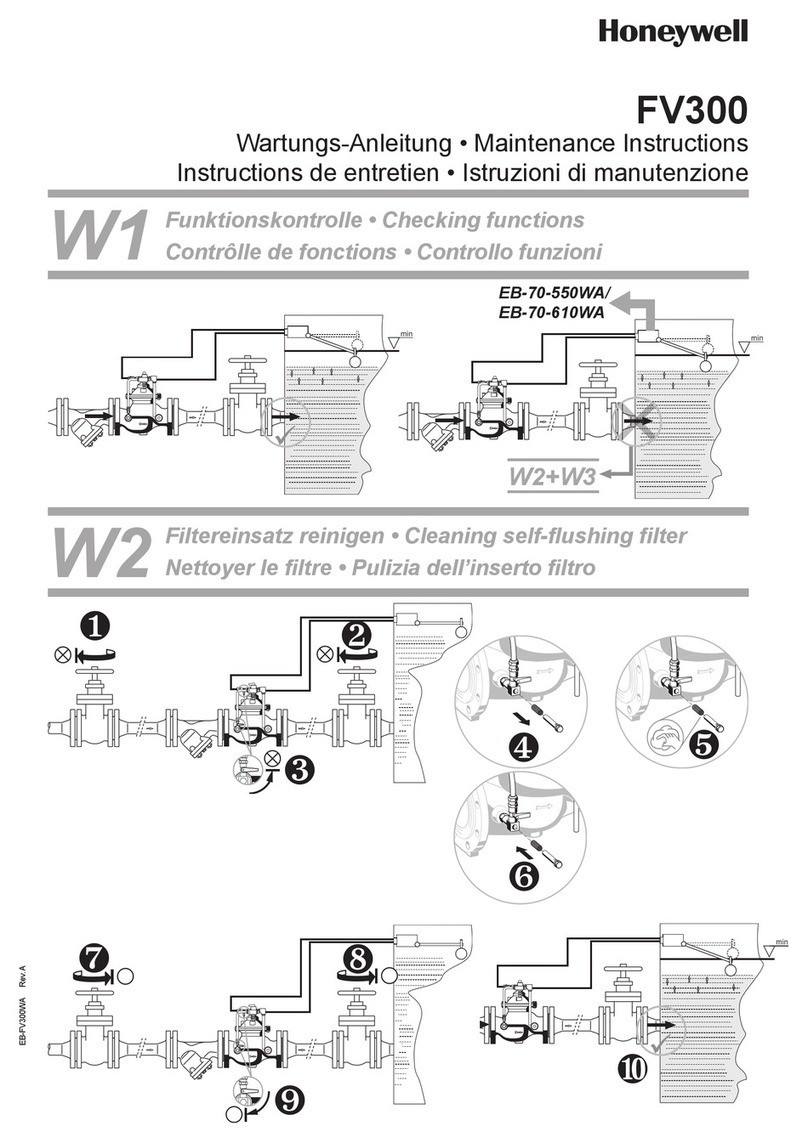
Honeywell
Honeywell FV300 Maintenance instructions
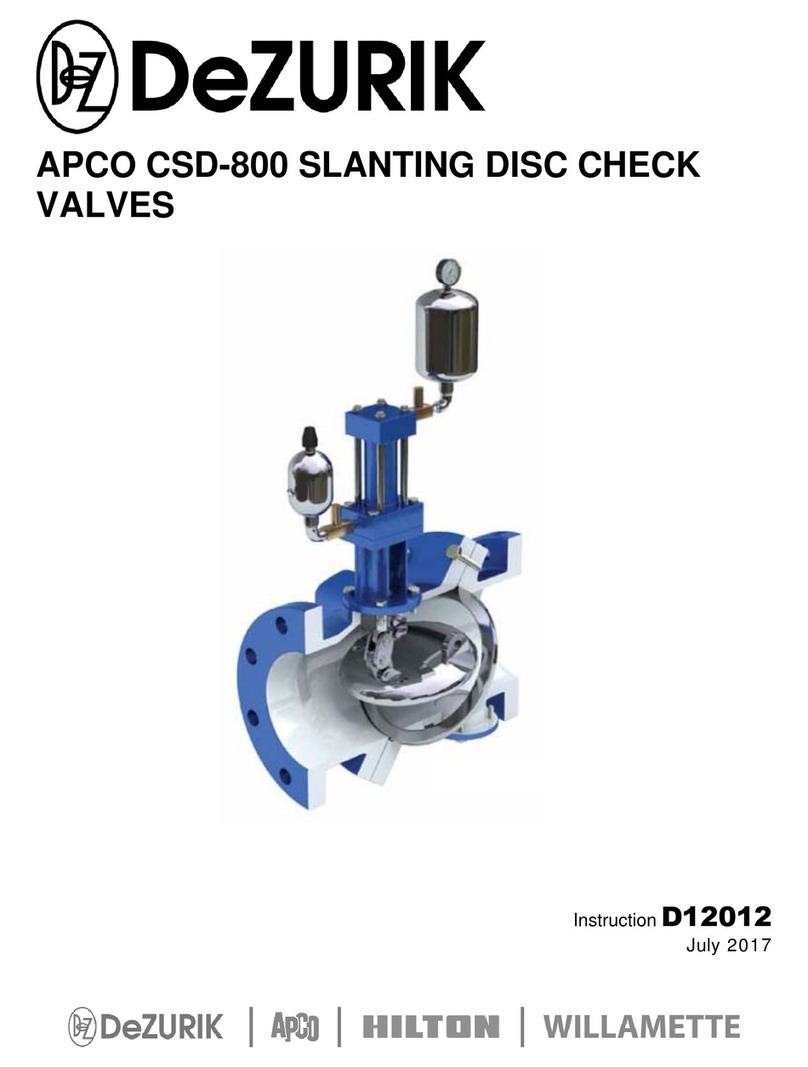
DeZurik
DeZurik APCO CSD-800 user manual

NimbeLink
NimbeLink Skywire NL-SW-LTE-GELS3 manual

Leviton
Leviton LV200 user guide
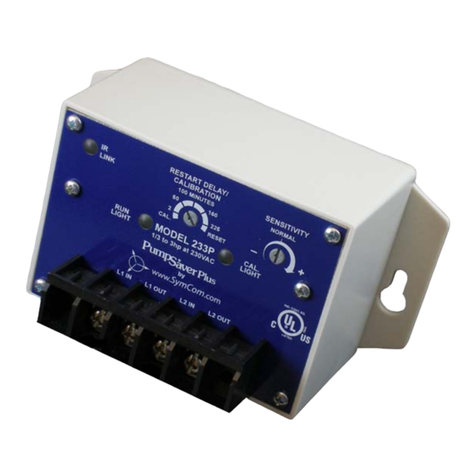
SymCom
SymCom PumpSaver Plus 111P installation instructions

ARI-Armaturen
ARI-Armaturen STEVI 350 Series Operating and installation instructions



